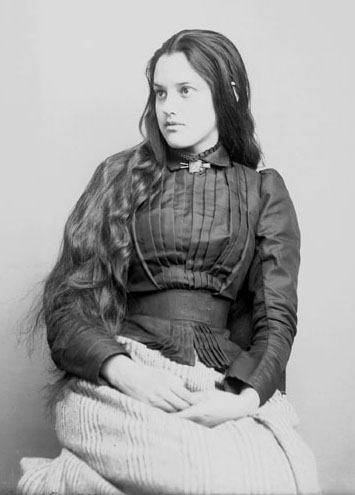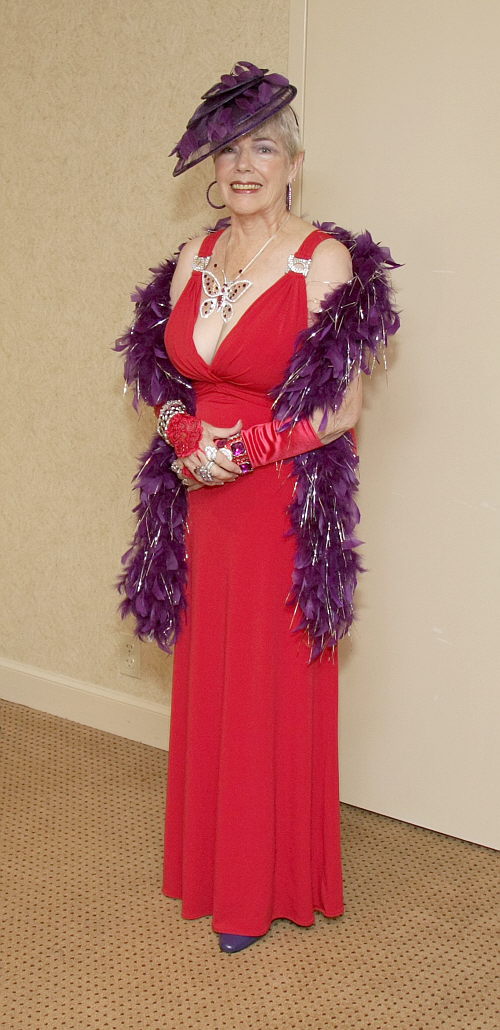Doug Kerr
Well-known member
Carla holds duel citizenship. She is a citizen of the United States of America, a consequence of several circumstances of her birth, notably the location: Blackwell, Oklahoma.
She is also a citizen of the Cherokee Nation, for which she qualified by virtue of having demonstrated an unbroken line of descent from a person listed on the Dawes Roll, a census of Cherokee Indians which arrived in what is now Oklahoma after forced relocation from the southwestern United States.
The Cherokee Nation, with over 200,000 citizens, is by far the largest of three "states" of the Cherokee Tribe, which is the second largest Indian tribe in the United states, second only to the Navajo.
This year, for the first time, Carla voted (by mail ballot) in the Cherokee Nation national elections, in which among other things, the Principal Chief (analogous to the President of the United States) and Deputy Principal Chief ("Vice President") are elected.
There were only two candidates for Principal Chief, but a ballot-counting controversy has slowed certification of the result. At the last report, the incumbent (Smith) was ahead of the challenger (Baker) by five votes (the total turnout was about 15,000). The matter will probably end up being resolved, one way or another, by the Cherokee Supreme Court (which sits in Tahlequah, Oklahoma, the Cherokee Nation capital).
For Deputy Principal Chief, there is a runoff. Interestingly enough, one of the candidates is E. Joe Crittenden - presumably a cousin to Carla. (Her maiden name was Crittenden.)
One might wonder about that surname. It resulted from the fact that, as Oklahoma developed, many of the English settlers found the Cherokee women just irresistible (as a certain Scot did many years later).
Just to include a photograph here, this is famed Cherokee babe Marcia Pascal (1/2 Cherokee ancestry) in about 1880:

Marcia Pascal ca. 1880. Photographer unknown.
From a glass negative collected by the Bureau of American Ethnology (PD)
Carla has just dispatched her ballot for the runoff. The system is very well-organized and secure. Among other things, the mail-in ballot envelopes have to be countersigned by the voter before a Notary Public. (The ballots themselves, of course, are anonymous.)
The Cherokee have always been very advanced in administrative matters. In the southeastern United States, although they very staunchly maintained their tribal traditions, they were also eager to adopt (and adapt) many of the systems and tools of the European settlers. Not too long after the area was colonized, the Cherokee had newspapers and libraries and law courts, as well as up-to-date (for the time) agribusiness operations (including, I'm afraid, slaves, mostly Negro).
You can imagine that the European settlers of Alabama and such felt quite threatened by this state of affairs, and so it was not surprising that eventually President Andrew Jackson was persuaded to arrange for the preponderance of the Cherokee to be forced to relocate to what is now Oklahoma, the centerpiece of which activity was a tragic march called the "Trail of Tears".
Of course, the Cherokee brought what would be today called "government in a box".
Best regards,
Doug
She is also a citizen of the Cherokee Nation, for which she qualified by virtue of having demonstrated an unbroken line of descent from a person listed on the Dawes Roll, a census of Cherokee Indians which arrived in what is now Oklahoma after forced relocation from the southwestern United States.
The Cherokee Nation, with over 200,000 citizens, is by far the largest of three "states" of the Cherokee Tribe, which is the second largest Indian tribe in the United states, second only to the Navajo.
This year, for the first time, Carla voted (by mail ballot) in the Cherokee Nation national elections, in which among other things, the Principal Chief (analogous to the President of the United States) and Deputy Principal Chief ("Vice President") are elected.
There were only two candidates for Principal Chief, but a ballot-counting controversy has slowed certification of the result. At the last report, the incumbent (Smith) was ahead of the challenger (Baker) by five votes (the total turnout was about 15,000). The matter will probably end up being resolved, one way or another, by the Cherokee Supreme Court (which sits in Tahlequah, Oklahoma, the Cherokee Nation capital).
For Deputy Principal Chief, there is a runoff. Interestingly enough, one of the candidates is E. Joe Crittenden - presumably a cousin to Carla. (Her maiden name was Crittenden.)
One might wonder about that surname. It resulted from the fact that, as Oklahoma developed, many of the English settlers found the Cherokee women just irresistible (as a certain Scot did many years later).
Just to include a photograph here, this is famed Cherokee babe Marcia Pascal (1/2 Cherokee ancestry) in about 1880:

Marcia Pascal ca. 1880. Photographer unknown.
From a glass negative collected by the Bureau of American Ethnology (PD)
Carla has just dispatched her ballot for the runoff. The system is very well-organized and secure. Among other things, the mail-in ballot envelopes have to be countersigned by the voter before a Notary Public. (The ballots themselves, of course, are anonymous.)
The Cherokee have always been very advanced in administrative matters. In the southeastern United States, although they very staunchly maintained their tribal traditions, they were also eager to adopt (and adapt) many of the systems and tools of the European settlers. Not too long after the area was colonized, the Cherokee had newspapers and libraries and law courts, as well as up-to-date (for the time) agribusiness operations (including, I'm afraid, slaves, mostly Negro).
You can imagine that the European settlers of Alabama and such felt quite threatened by this state of affairs, and so it was not surprising that eventually President Andrew Jackson was persuaded to arrange for the preponderance of the Cherokee to be forced to relocate to what is now Oklahoma, the centerpiece of which activity was a tragic march called the "Trail of Tears".
Of course, the Cherokee brought what would be today called "government in a box".
Best regards,
Doug

